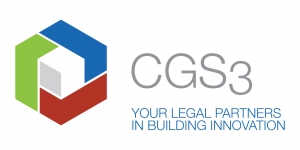You might be wondering, did I read that headline correctly? You did if your commercial retail or restaurant property is in need of an upgrade, or currently undergoing a renovation.
In November the IRS issued Revenue Procedure 2015-56, which aims at providing qualified tax payers who are engaged in operating a retail establishment or a restaurant a safe harbor accounting method for those costs incurred that are related to remodeling and refreshing their qualified buildings.
The new procedure allows retailers and restaurateurs, as well as landlords, to deduct 75% of the expenses from remodels. Taxpayers interested in using this procedure must file for an automatic change in accounting method, Form 3115, Application for Change in Accounting Method.
Who qualifies for a commercial property upgrade under the new procedure?
To qualify for the deduction of expenses through Revenue Procedure 2015-56, a remodel-refresh commercial project must maintain the following guidelines:
- Maintain a contemporary and attractive appearance;
- More efficiently locate retail or restaurant functions and products;
- Conform to current retail or restaurant building standards and practices;
- Be intended to standardize to consumer experience;
- Offer the most relevant and popular goods within the industry; or address changes in demography by changing products or service offerings and their protestations.
Which costs associated with the commercial property upgrade are eligible for deduction?
The costs associated with the remodel, refresh, repair, or maintenance of the qualified commercial property that are eligible for a safe harbor include:
- Painting, polishing, or finishing interior walls;
- Adding, replacing, repairing, maintaining, or relocating permanent floor, ceiling, or wall coverings, including millwork, kitchen fixtures or signage;
- Relocating departments, eating areas, check-out areas, kitchen areas, beverage areas, management space, storage space, or similar areas, within the existing footprint;
- Increasing or decreasing the square footage of departments, eating areas, check-out areas, kitchen areas, beverage areas, management space, storage space, or similar areas within the existing footprint;
- Moving, constructing, or altering walls or adding, relocating, or removing a room or rooms within the existing footprint;
- Adding, relocating, removing, replacing, or re-lamping lighting fixtures, or adding reflectors, mirrors, or other similar devices to existing lighting fixtures;
- Repairing, maintaining, retrofitting, relocating, adding, or replacing building systems within the existing footprint;
- Replacing façade materials around windows and entrances, or making non-structural changes to exterior facades;
- Relocating, replacing, or adding windows or doors within the existing footprint;
- Repairing, maintaining, or replacing the roof or portion of the roof within the existing footprint;
- Repair and maintenance to the qualified building that directly benefits or is incurred by reason of a remodel-refresh project;
- Removal and demolition of structural components, such as insulation or drywall that directly benefit or are incurred by reason of the remodel-refresh;
- Obtaining permits or similar authorizations that directly benefit or are incurred by reason of a remodel-refresh project;
- Architectural, engineering, and similar services that directly benefit or are incurred by reason of a remodel-refresh project.
Which costs are excluded?
Those costs that are not eligible for a safe harbor include:
- Personal or intangible property;
- Land, including non-depreciable or depreciable improvements such as sidewalks, landscaping;
- The initial acquisition, production, or lease of a qualified building, including purchase price, construction/transaction costs, and costs of work performed prior to the date building is initially placed in service;
- The initial build-out, or a portion thereof, for a new lessee;
- Activities to rebrand a qualified building performed within two taxable years following the closing date of (a) an acquisition or initial lease or (b) the acquisition by the qualified taxpayer of a controlling interest in or lease of the qualified building;
- Activities performed to ameliorate a material condition or defect that existed prior to the acquisition or lease of the qualified building or that arose during the production/development;
- Material additions, including enlarging, expanding, or extending the square footage or the building systems in conjunction with the square footage;
- Restoration caused by damage for which the taxpayer is required to take a basis adjustment as a result of a casualty loss, or relating to a casualty event;
- Adapting more than 20% of the total square footage of a qualified building to new or different use or uses, as part of a remodel-refresh project;
- Remodel-refresh costs incurred during a temporary closing – which means closing the qualified building during normal business hours for more than 21 consecutive calendar days;
- The cost of any property for which the taxpayer has claimed an expense deduction under §179.
If it is time to remodel or refresh your commercial retail space, or if you have a project currently underway, then consider taking advantage of this new safe harbor to deduct up to 75% of the costs that might otherwise be capitalized and depreciated. Prior planning will assist you in identifying the costs that can benefit from the new procedure, so be sure to consult your commercial real estate attorney for guidance.
As it turns out, maybe the IRS isn’t such a Scrooge!
Sources:
 Crosbie Gliner Schiffman Southard & Swanson LLP (CGS3), Phil Jelsma – Partner
Crosbie Gliner Schiffman Southard & Swanson LLP (CGS3), Phil Jelsma – Partner
IRS Rev. Proc. 2015-56
